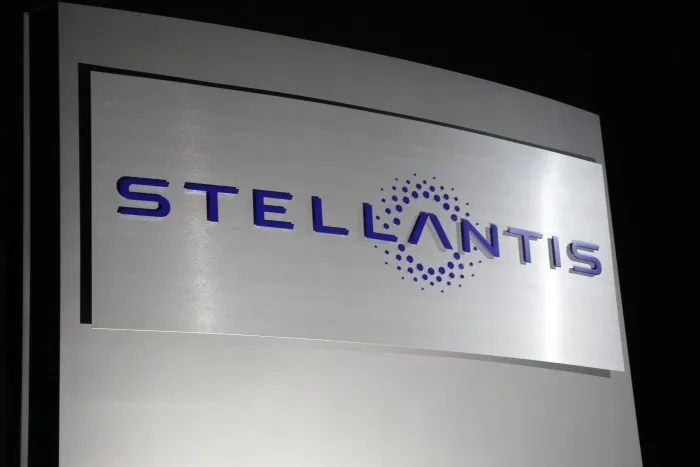Dodge’s Strategic Shift: Production Postponed for Electric Charger and Charger Daytona EV Delays
The automotive world is witnessing a seismic shift in how electric vehicles (EVs) are being developed and rolled out. Leading this charge, Dodge and its parent company, Stellantis, have announced a significant delay in the production of the highly anticipated Electric Dodge Charger model, which was initially set to roll off the production line at their Ontario plant. As the automotive landscape evolves, both challenges and opportunities loom for traditional automakers who are racing to catch up with the demand for electric vehicles.
Production Delays of Electric Dodge Charger
Stellantis recently communicated this decision in a press release, citing supply chain complications and the need for additional time to refine the technology behind their electric vehicle offerings. Furthermore, the Ontario plant, which has historically produced some of Dodge’s most iconic models, will now be focused on adapting to the future of electric mobility.
“We are committed to producing vehicles that meet the needs and expectations of our customers,” said a spokesperson for Stellantis. “Delaying the Electric Dodge Charger gives us the opportunity to ensure that we are delivering the best product possible.”
Electric Vehicle Production Landscape
This postponement follows a broader trend in the automotive industry, where established manufacturers are finding it increasingly challenging to pivot from traditional gasoline engines to electrified variants. Companies like Dodge, which have a rich history steeped in muscle cars and performance vehicles, must now navigate this transition while still maintaining their brand essence. The push towards electric vehicles doesn’t just represent a technological shift, but a cultural one as well.
Dodge Charger Daytona Scat Pack Testing in Italy
In a related piece of news, the Dodge Charger Daytona Scat Pack was recently spotted testing in Italy, generating considerable excitement among enthusiasts and industry insiders alike. The beastly performance of the Charger Daytona Scat Pack in a hybrid guise is seen as a beacon of hope for those who fear Dodge might lose its identity in the transition to electric.
As per sources, the Scat Pack is being developed to deliver a thrilling driving experience, keeping the adrenaline rush that Dodge has become synonymous with. While many may see electric vehicles as synonymous with quiet and efficiency, the Charger Daytona is aiming to break that mold with powerful performance metrics and engine responses akin to its gas-powered predecessors.
Delays Faced by Dodge Charger Daytona EV
Compounding the difficulties surrounding production, Dodge has also announced a delay for the four-door Charger Daytona EV until the 2026 model year. Analysts speculate this could be a strategic choice to ensure that the future EV lineup aligns better with changing consumer preferences and the unique brand characteristics that Dodge has cultivated over the decades.
The Charger Daytona EV has been marketed as a revolutionary vehicle that combines traditional performance with cutting-edge electric technology. However, the need for more testing and refinement has led the automaker to push back the release date, as they work to integrate iconic design elements with sustainable innovations.
The Electric Future: Challenges and Opportunities
While delays are often perceived negatively, they can also serve as an opportunity for companies to recalibrate strategies and reassess their products. For Dodge, the transition to electric vehicles represents not just a shift in product offerings but a need to cultivate a new identity that appeals to both loyal fans of the brand and a new generation of environmentally conscious consumers.
This adaptation is critical, as electric vehicles are expected to account for a more significant share of the automotive market in the coming years. Tesla has long dominated this space, but traditional manufacturers are now increasingly investing in EV technology to capture a slice of this booming sector.
Consumer Perception
Consumer perceptions towards electric vehicles are evolving rapidly. Early hesitancies tied to range anxiety, charging time, and performance are being countered with innovations that promise improved range, faster charging capabilities, and thrilling acceleration. Automakers like Dodge must not only meet existing expectations but exceed them to capture consumer interest.
Furthermore, given Dodge’s established base of enthusiasts, the company faces the unique task of convincing performance-loving consumers that electric vehicles can maintain, if not enhance, the driving thrill that defines their brand.
The Road Ahead for Dodge and Stellantis
The ongoing technological race is paving the way for new discoveries in battery efficiency, materials, and performance optimization. As Dodge and Stellantis adjust their production schedules and invest in research and development, the automotive community eagerly awaits the next generation of performance-oriented electric vehicles.
In the meantime, the delay of the Electric Dodge Charger and the introduction of the Charger Daytona Scat Pack should be viewed through the lens of a cautious yet proactive approach. The essence of muscle car culture does not have to fade; rather, it can adapt and evolve within an electric framework.
Conclusion
The balance Dodge is striving to achieve between maintaining its storied performance heritage and embracing electric innovation will likely define its success in the North American automotive market for years to come. As the world leans more towards sustainable mobility solutions, consumers will undoubtedly be watching to see how successfully Dodge navigates this transition without sacrificing the qualities that have made it a household name.
In an automotive era marked by significant change, uncertainty can lead to growth—a principle that Dodge and Stellantis are all too familiar with as they approach an electric future. Whether successful or challenged, the automotive industry will continue to evolve, with Dodge leading the charge into new territories.






